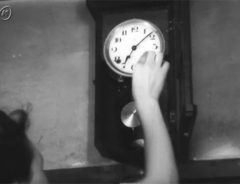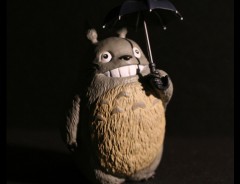
Source: Facebook/Keow Wee Loong
Man Sneaks Into Fukushima’s Abandoned Red Zone And Photographs A Town Untouched Since 2011
- Source:
- Facebook/Keow Wee Loong / imgur/xanthon / Science Daily
- Tags:
- Creepy / Exploration / Fukushima / Japan / Photography / Radiation
Related Article
-

Gekkan Geinin: The First Monthly Entertainer Photo Exhibition now at Shibuya Parco
-

Asahi Shimbun’s “Nature of Japan” photo contest now open for entrants
-

Warm yourself up with these Top Japanese Benri Goods-Convenient Items for winter
-

70-Year-Old News Footage Reveals How The Japanese Came To Be So Punctual
-

Japanese Yakiniku Chain Lets You BBQ And Eat Along With Your Dog
-

Fan-Made Trailer For My Neighbor Totoro As A Japanese Horror Film


The idea of exploring and documenting abandoned towns and areas is something that appeals to many photographers as well as the inner-adventurer in people. However, we imagine that areas of Fukushima, Japan, which were particularly devastated during the 2011 earthquake and tsunami, as well as the subsequent Fukushima Daiichi nuclear disaster, are not at the top of many would-be explorer's lists. Malaysian photographer Keow Wee Loong, however, seems to have little concern for the after-effects of those incidents, sneaking into Fukushima's closed off "red zones" to photograph ghost towns untouched since their immediate evacuation.
Source: Keow Wee Loong
Now, there is a considerable amount of sensationalism at play here (particularly as these evacuated zones are nothing like the rest of Fukushima). Loong claims to have picked up a "burning sensation in my eyes and thick chemical smell in the air", which would run contrary to reports about the actual level of contamination, depending on the area--as well as most conventional knowledge of radiation. Also, the forbidden nature of these towns can be debated, as the government has "red zones" barricaded and normal access prohibited due to concerns over radiation sickness (as well as infrastructural damage and unstable buildings), but the unmanned nature of these outposts kinda means anyone willing to break the law can just hop in. Access via permit can be acquired sometimes, but Loong claims he didn't want to go through the red tape of the actual law, and instead opted to lurk through forests and trespass with just a phone, GPS, and friends as guidance.
Although the radioactive nature of some areas has been overstated, given the different hot spots traveled to with apparently a gas mask as totally insufficient means of protection, there is quite a bit of recklessness on display here, and definitely not something advisable to do (not to mention trespassing). That said, the pictures are indeed fascinating, and show that the towns of Okuma, Namie, Futaba, Tamioka appear as if frozen in time, which is obviously understandable as most were instantly evacuated. It would be foolish to think that these pictures represent the un-restricted areas of Fukushima which are getting along normally, but in these towns nature has reclaimed much of the outside, and while many buildings are damaged, the abandoned interiors have a haunting emptiness to them. Here are some selected photographs.
Abandoned supermarket, apparently frequented by wild animals.
Source: Keow Wee Loong
Porn, which you don't need to go to a ghost town for.
Source: Keow Wee Loong
Abandoned supermarket.
Source: Keow Wee Loong
Abandoned bookstore.
Source: Keow Wee Loong
Video/DVD rental store.
Source: Keow Wee Loong
Left behind laundry--not the best thing to be picking up.
Source: Keow Wee Loong
Namie Station.
Source: Keow Wee Loong
Namie supermarket.
Source: Keow Wee Loong
Where time stopped in these towns.
Source: Keow Wee Loong
A barrier in Okuma.
Source: Keow Wee Loong
Collapses structures from the earthquake.
Source: Keow Wee Loong
Left behind vehicles.
Source: Keow Wee Loong
An abandoned pub.
Source: Keow Wee Loong
Loong identifies these as radioactive waste, but they appear to be bags of topsoil.
Source: Keow Wee Loong
Empty streets.
Source: Keow Wee Loong
More damaged buildings.
Source: Keow Wee Loong
100 meters from the Fukushima Daichi Nuclear Power Plant--a rather bad place to be standing and taking a pic.
Source: Keow Wee Loong
An over-run shoe store.
Source: Keow Wee Loong
A Playstation 2.
Source: Keow Wee Loong
Vegetables and flowers.
Source: Keow Wee Loong
The entire set of photos can be seen in Keow Wee Loong's Facebook album. While there is plenty of fascinating material here, there is a sense of unease in someone providing it by going through homes that can never be returned to by those who were forced to leave them.